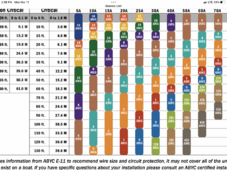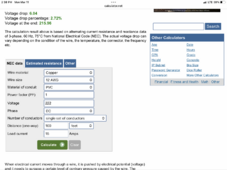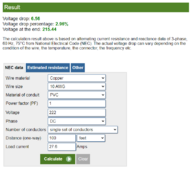myersfamilyhome
New Member
- Joined
- Feb 9, 2021
- Messages
- 140
How does one handle properly wiring large gauge PV wire to an CC that has smaller connections?
Scenario :
6x Panels @ 37.07v/13.79a
Distance from Panels to CC: 100ft
EG4 6000EX : PV Connection unspecified (assuming <= 8AWG)
* Not provided in the manual
At this distance, running 15a at 100' require 2AWG. With this in mind and with the CC connections being smaller, how do you properly hookup? Do I run the 2AWG to a disconnect right before the CC and then stepdown the wire to the largest acceptable AWG that will fit in the CC for the remaining few feet?
Scenario :
6x Panels @ 37.07v/13.79a
Distance from Panels to CC: 100ft
EG4 6000EX : PV Connection unspecified (assuming <= 8AWG)
* Not provided in the manual
At this distance, running 15a at 100' require 2AWG. With this in mind and with the CC connections being smaller, how do you properly hookup? Do I run the 2AWG to a disconnect right before the CC and then stepdown the wire to the largest acceptable AWG that will fit in the CC for the remaining few feet?







